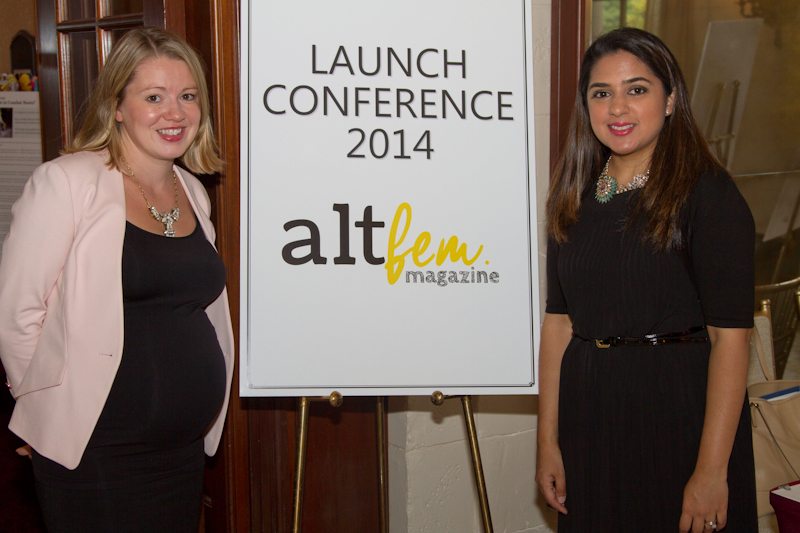My middle schoolers are in that precious yet precarious space where they yo-yo between the innocence of childhood and the desire to be independent. They cling to the safety of parents and home, and while they are not ready to leap out of their bubble, both nudge its outer limits and hope the bubble stretches but doesn’t quite pop. This was all on clear display this weekend over my “p***y hat.”
This past Saturday protesters in Washington, D.C. and around the world proudly wore fuchsia knitted hats with corners shaped like cat ears. This fashion statement was identity politics at its best. Protestors donned these hats to reclaim the vulgarity uttered by President Trump, and recorded unbeknownst to him on a hot mike, to Billy Bush of Access Hollywood in 2005. “ … I just start kissing them [women]. It’s like a magnet. Just kiss. I don’t even wait. And when you’re a star, they let you do it. … Grab ’em by the p***y. You can do anything,” he had cavalierly bragged.
The 29-year-old screenwriter, Krista Suh, who conceived of the Pussyhat Project with her friend Jayna Zweiman explained that the knit hats serve as “a unique visual statement which will help activists be better heard.” They take President Trump’s misogynistic comment and turn it on its head by using the hat as an unapologetically feminine symbol of women’s power. In fact, the reclamation of the word p***y is so complete that Suh and Zweiman make no explicit reference on their website to the original episode that gave rise to this movement.

Image found on Twitter: @rmayersinger
As a mother of a fairly sheltered 11-year-old, I would have no such luck. My daughter loves to draw pictures of girls, elves, and fairies and in nearly every sketch, the figure has a set of cat ears and sometimes a tail. One look at my hat, and she had to have it. My parent-brain went into high gear, considering possible scenarios she might face if she wore the hat to school. Would kids humiliate her with taunts like “p***y” or “p***y hat”? Would they snicker behind her back? Would they feel embarrassed for her?
At the same time, I weighed the effects of explaining the origins of and symbolism behind this seemingly innocuous fashion statement to my 11-year-old. I wondered how this discussion would shift my daughter’s perception of me–a hijab wearing, modest, practicing Muslimah responding to a vulgarity in a very public and audacious manner. Could my shy kids, who cover their eyes and duck behind a blanket at any hint of romance in a television show, square this bold action with their image of me?
When my daughter asked to wear my fuchsia hat, my identity of mother, Muslimah, progressive American, and feminist all simultaneously pushed forward. I simply could not refuse her the hat with no explanation. Neither she nor her brother would have accepted that kind of response, not to mention that it went against my parenting philosophy of offering honest but age-appropriate explanations. I much preferred that she hear the meaning of my pink hat from me than from a confused fellow sixth-grader.

Shannon Stapleton/Reuters
So I began. “You know how Trump insulted immigrants, Mexicans, Muslims, the disabled…. Well, he insulted women as well. In fact, several women have accused Trump of assaulting them. These hats are called p***y hats. Yes, the word, “p***y” can mean cat, but it’s also used in a mean and insulting way to describe a part of a woman. Do you know which part?”
She nodded solemnly, “Your private parts.”
We briefly discussed how no one had a right to touch one’s privates, and how we don’t use the “p word.” I described the Access Hollywood incident and said, “We are wearing these hats to say here we are. We are human beings, and we will not be silent. We are claiming that word for ourselves and using it in a good way to stand up for any woman who has ever been assaulted and to say it’s not okay, and we will hold you to account.”
She seemed to understand and after our discussion, happily slipped on the crocheted hat and went about her day. It sat cozily on her head the entire weekend and I could see the hat made her feel confident. In fact, as the weekend went on, my daughter asserted herself more at home; she protested when I called her to help with a particular chore. “Mom, why are you asking me to do this; why not my brother?”
Now, my son’s reaction was quite different. On Sunday afternoon, my daughter asked me to explain the statement behind “kitty hat” to her brother because she wanted him to understand its deeper meaning. I had only begun to launch into my carefully crafted answer, when my son pressed his palms to his ears and started chanting, la, la, la, la, la. This was not something he wanted to hear from his mother. In a snap, he yo-yoed back from the edge of the bubble, while my daughter walked right through to the other side.
Margaret A. Johnson, Ph.D. is the founder and Managing Director of Transfirex Translation Services, Inc. As a sociologist, writer, and interfaith activist, she works to help us recognize our common humanity.




